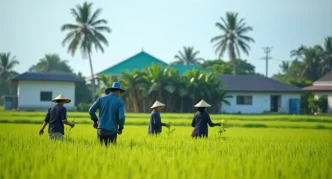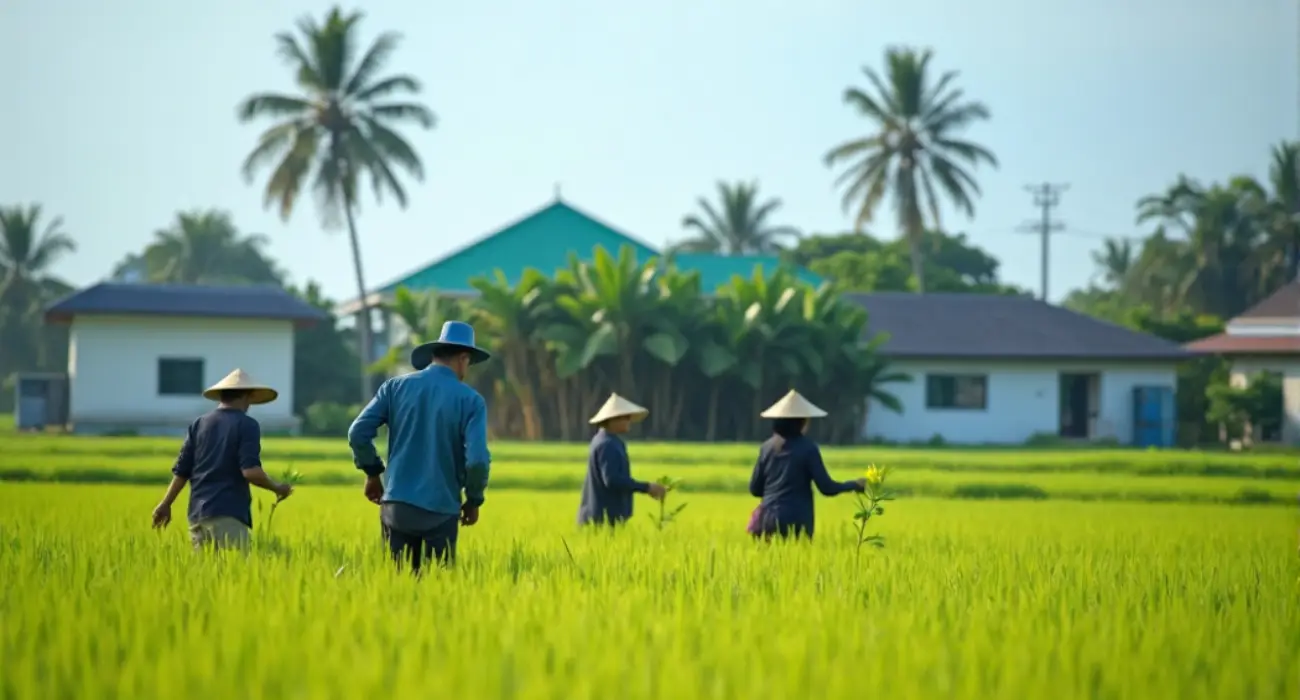In a Bangkok supermarket, packets of Thailand-grown japonica rice sit neatly alongside imports from Japan, a visual testament to a growing trend. Thailand and Vietnam, two of the world’s leading rice exporters, are seizing a unique opportunity to expand their foothold in Japan’s rice market, driven by surging domestic prices in Japan and a global appetite for washoku, or Japanese cuisine. As both countries ramp up production of japonica rice—the short-grain variety synonymous with Japanese staples like sushi—they are positioning themselves to meet demand in a market known for its high standards and environmental consciousness.
A Booming Opportunity in Japan
Japan, long protective of its domestic rice industry, is grappling with a shortage that has pushed prices to unprecedented levels. This has created an opening for exporters like Thailand and Vietnam, whose rice, even with hefty import tariffs, remains significantly cheaper than locally grown varieties. In Thailand, a five-kilogram pack of locally produced japonica rice sells for 275 Thai Baht (US$8), a fraction of the cost in Japan, where equivalent products often fetch much higher prices. Japanese-branded rice varieties like Sasanishiki, grown in Thailand, are also gaining traction in local markets catering to expatriates and tourists.
The export value of Thai rice to Japan has already seen a significant rise, increasing 1.3-fold over the past decade to US$183 million in 2024. While much of this volume currently comprises indica rice—the long-grain variety dominant in Southeast Asia—the shift toward japonica production signals a strategic pivot. Thai Commerce Minister Pichai Naripthaphan has openly expressed the government’s intent to capitalize on Japan’s high-price market, aiming to boost exports further. “We see a market where Thai rice can command premium prices” he said, underscoring the economic potential for Thai farmers.
Vietnam, too, is making bold moves. On June 5, the Vietnam Rice Industry Association (VIETRISA) exported its first batch of 500 tons of “Low-emission Green Vietnamese Rice,” a japonica variety tailored for environmentally conscious Japanese consumers. VIETRISA Chairman Bui Ba Bong highlighted the timing of Japan’s rice shortage as a critical window. “This is a good opportunity for Vietnam-made rice to enter the high-end market” he said, emphasizing plans for sustained supply to Japan.
From Paddies to Profit: Farmers Adapt to Demand
In Thailand’s fertile plains, where the warm climate allows for multiple harvests annually, farmers are increasingly turning to japonica rice for its lucrative returns. A 44-year-old Thai farmer, who recently began cultivating Japan’s Koshihikari variety, noted that he can sell japonica rice at double the price of traditional indica rice. “My profit margin is high” he said, adding that his paddies yield three harvests a year, a stark contrast to Japan’s single annual harvest due to its seasonal climate.
Vietnam’s approach is equally innovative, blending agricultural adaptation with sustainability. The “Low-emission Green Vietnamese Rice” brand is marketed as a product that reduces greenhouse gas emissions during cultivation—a key selling point in Japan, where environmental standards are stringent. This focus on quality and sustainability reflects a broader trend among Southeast Asian exporters to align with Japanese consumer values, which prioritize not just taste but also ethical production methods.
Global Rice Trade Dynamics
The global rice trade paints a broader picture of Southeast Asia’s dominance. According to a May estimate by the U.S. Department of Agriculture, worldwide rice exports for fiscal 2024 reached 61.4 million tons. India leads with a 40% share, while Vietnam and Thailand hold 13% and 11%, respectively. This positions both nations as critical players in meeting global demand, particularly as Japan’s import needs grow. Beyond Thailand and Vietnam, Taiwan has also seen a dramatic rise in rice exports to Japan, with volumes between January and May increasing over six-fold to 7,759 tons compared to the same period last year, largely due to similarities in taste and cultivation techniques with Japanese rice.
Japan’s import system, however, is not without barriers. A tariff of ¥341 (US$2.30) per kilogram applies to rice exceeding a tariff-free quota known as “minimum access.” Despite this, Japanese trading firms are increasingly importing foreign rice, as the total cost remains lower than domestic alternatives. This trend, while beneficial for exporters, raises questions about the long-term impact on Japan’s agricultural sector, which has historically been a cornerstone of national identity and food security.
Challenges for Japanese Farmers
The widening price gap between imported and domestically grown rice poses a significant threat to Japanese farmers. Rice cultivation in Japan is not just an economic activity but a cultural practice, deeply tied to rural communities and traditional ways of life. If imports from Southeast Asia continue to rise, driven by competitive pricing, local producers may struggle to maintain market share. This potential shift is already stirring debate within Japan, where agricultural protectionism has long been a contentious issue in trade negotiations.
Analysts suggest that while short-term imports may alleviate immediate shortages, they could undermine the sustainability of Japan’s rice industry if not balanced with domestic support. Policies to protect farmers—such as subsidies or revised tariff structures—may come under scrutiny as the government navigates the dual pressures of consumer demand and agricultural preservation. The situation remains fluid, with no clear resolution on how Japan will reconcile these competing interests.
Strategic Shifts in Southeast Asia
For Thailand and Vietnam, the focus on japonica rice represents more than just an export opportunity; it is a strategic realignment of agricultural priorities. In Thailand, where indica rice has long dominated, the pivot to japonica involves not just farmers but also government policy, with initiatives aimed at training cultivators and marketing Thai-grown Japanese varieties. Vietnam’s emphasis on sustainable production, meanwhile, positions it as a forward-thinking player in a market increasingly defined by environmental considerations.
Both nations face their own challenges in scaling up japonica production. While Thailand’s climate supports year-round cultivation, the transition requires investment in seeds, training, and infrastructure to ensure consistency in quality—a critical factor for Japanese consumers. Vietnam, similarly, must balance its push for high-end markets with the needs of its domestic consumers, ensuring that export ambitions do not compromise local food security.
Looking Ahead: A Competitive Rice Market
As Thailand and Vietnam deepen their presence in Japan’s rice market, the dynamics of global agricultural trade are set to evolve. The immediate beneficiaries are likely to be consumers in Japan, who gain access to affordable, high-quality rice, and farmers in Southeast Asia, for whom japonica cultivation offers a path to higher incomes. Yet the ripple effects—on Japanese agriculture, on regional trade balances, and on the cultural significance of rice—remain uncertain.
For now, the supermarket shelves in Bangkok tell a story of adaptation and ambition, where Thailand-grown japonica rice holds its own against Japanese imports. Whether this trend heralds a lasting shift in the rice trade or sparks a protective backlash in Japan is a question that will unfold in the coming years, as exporters and policymakers alike navigate this delicate balance of opportunity and risk.
















